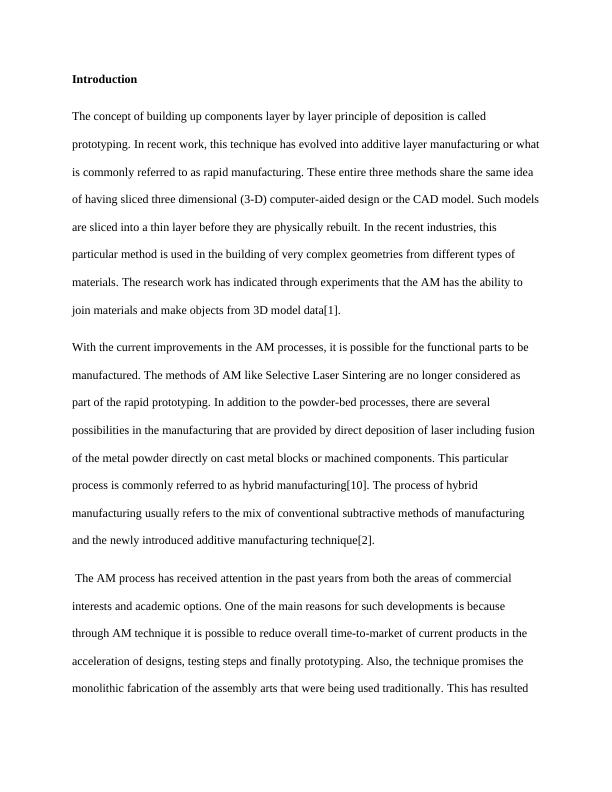Additive Manufacturing in Titanium Alloys
Develop a comprehensive understanding of existing issues in metal additive manufacturing and create a project report on a specific metallic alloy.
16 Pages3271 Words29 Views
Added on 2023-01-17
About This Document
This paper discusses the application of additive manufacturing in titanium alloys, focusing on Ti-6Al-4V. It explores the economic advantages, mechanical values, and industry applications of this technique.
Additive Manufacturing in Titanium Alloys
Develop a comprehensive understanding of existing issues in metal additive manufacturing and create a project report on a specific metallic alloy.
Added on 2023-01-17
ShareRelated Documents
End of preview
Want to access all the pages? Upload your documents or become a member.
Application of Additive Manufacturing on Ti-6Al-4V Alloy
|16
|2506
|322
Temperature distribution in Additive Manufacturing involving Titanium Alloy (TI-6AL-4V)
|10
|2713
|41
Report on Manufacturing of Mechanical Parts
|27
|5341
|109
Title: Concept of Additive Manufacturing in Titanium Alloy
|10
|371
|80
Additive Manufacturing and Thermal Analysis of Ti-6Al-4V using ANSYS Software
|18
|4150
|394
Metal Additive Manufacturing (AM)
|15
|3036
|95




